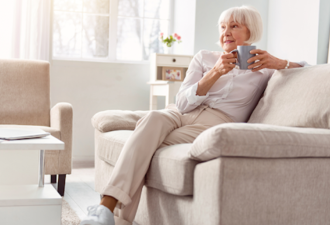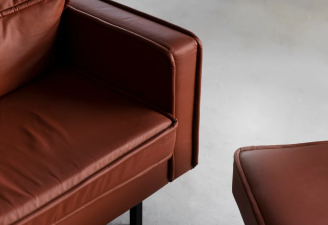How to Choose Furniture That Lasts for Years
When choosing furniture, material is undoubtedly one of the most crucial factors.
Every family wants furniture that's both durable and aesthetically pleasing. However, faced with a dazzling array of materials on the market, people often wonder: Which material is best?
Sofa: The Anchor of the Living Room
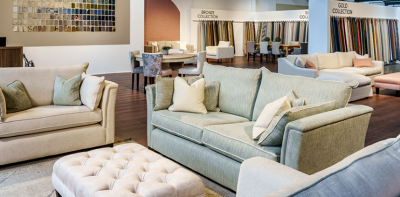
The Double Test of Comfort and Durability
Key Points in Sofa Selection:
• The Frame is the Foundation: Prefer solid wood or metal frames for their sturdiness and stability. Avoid cheap panels prone to warping and cracking. A shake test is essential; a good sofa should be rock-solid.
• The Spring System is the Support: Serpentine springs (S-shaped springs) paired with elastic bandages are a classic and durable combination, providing even support and excellent rebound.
• The Filling Determines Comfort: High-density rebound foam (density ≥ 30 kg/m³) is the cornerstone of collapse resistance. High-quality down or latex layers enhance the comfort and breathability, but require regular patting and maintenance. • Fabric quality: For durability, choose top-grain cowhide (full green/full grain is best) for a timeless look. Consider the color for stain resistance, and the texture should be cleverly concealed to hide signs of use.
• Tips for avoiding pitfalls: Be wary of sofas that are too light, frame connections secured solely by nails or glue, cushions that are too thin or don't spring back after prolonged use, and fabrics that are sparse and prone to snags and pilling.
Dining Table: A Perfect Fit for All Seasons
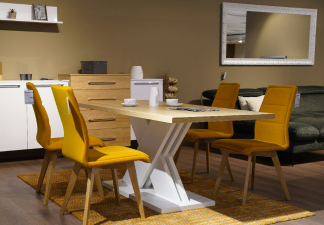
Sturdiness and quality are essential.
Key points for choosing a dining table:
• The tabletop should be durable: Solid woods such as oak, walnut, cherry, and teak are warm and durable, but require maintenance. High-quality rock slabs are scratch-resistant, wear-resistant, and heat-resistant, requiring little maintenance. Tempered glass tabletops are transparent and easy to clean. Thickness is key (recommended for solid wood: ≥2cm, for rock slabs: ≥12mm) to ensure stability and heft.
• Sturdy legs: Thick, sturdy legs, such as tapered, inverted-tapered, or cross-shaped, provide reliable support. Joints should be reinforced with heavy-duty hardware or precision mortise and tenon joints. Shaking without budging is essential.
• Matching Size and Shape to the Space: Allow ample room for movement (at least 80 cm). Round or oval tables create a warm and inviting atmosphere, while long tables offer a more formal and elegant feel. Considering future expansion needs, consider an extendable table design.
• Avoiding Pitfalls: Stay away from tables with flimsy tops, thin and shaky legs, joints secured with glue or simple screws, low-quality veneers that are prone to scratching and peeling, and untreated sharp corners.
• Long-Term Value: A good dining table embodies the warmth of home and the joy of family. It captures countless precious moments of shared meals and conversations, and its unwavering stability ensures a secure and enjoyable meal.
"Bed: The Foundation of Sleep"
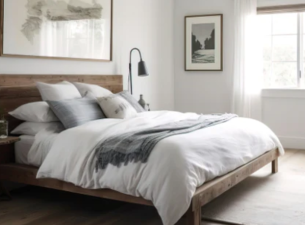
Stable and quiet are paramount.
Key Points for Bed Selection:
• Material Determines Longevity: A high-quality solid wood frame is sturdy and environmentally friendly; a high-quality metal structure is stable and has strong load-bearing properties. Ensure the board material has a high environmental rating (at least E0). • Structure is crucial for stability: The gaps between ribs should be ≤5cm, and the slats should be wide, thick, and sufficient in number. A single bed frame offers slightly lower air permeability but provides even support. Preferred joints include mortise and tenon joints or heavy-duty bolts with reinforced corner brackets to ensure quiet and stable operation.
• Considered Design: The bed's legs are at an appropriate height (≥12cm) to facilitate robot vacuum entry and exit. The bedside design is ergonomic, ensuring comfortable leg support during prolonged sitting. For storage models, consider the quality of the gas springs and the smoothness of the guide rails.
• Long-term Value: A stable and quiet bed frame is the silent guardian of a good night's sleep. It silently supports every restful night, without disturbing noise or the worry of collapse, allowing the body and mind to rest completely.
Mattress: An Investment in a Good Night's Sleep
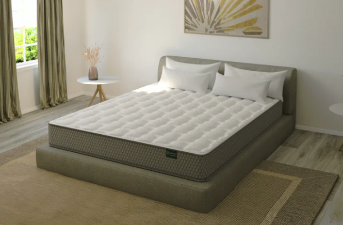
Fit and Support Are the Soul
Key Mattress Selection:
• Support is the Core: Pocket spring systems precisely support all body parts and offer strong resistance to interference, making them the preferred choice. The number of springs isn't absolute (800-1500 is common); wire diameter (generally ≥2.0mm) and heat treatment are more important.
• Comfort layer: Natural latex (content ≥90%) is breathable, antibacterial, and provides a high fit; memory foam (density ≥50kg/m³) provides pressure relief and a strong, enveloping feel; high-quality, high-resilience foam provides balanced support. Multi-layer composite designs often balance different needs.
• Skin-friendly and breathable fabric: Prefer natural materials that are antibacterial, anti-mite, moisture-wicking, and breathable, such as Tencel, pure cotton, or functional blends.
• Long-term value: A good mattress is the invisible cornerstone of a healthy life. Every night, it provides the perfect support and comfort, effectively relieving fatigue, protecting spinal health, and ensuring a restful and energetic day.
Wardrobe: The Art of Storage
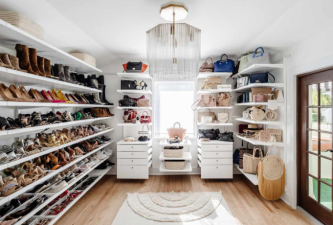
Structure and Details Determine Everything
Key Considerations for Custom Wardrobe Selection:
• Environmentally Friendly and Durable Panels: Cabinet/door panels should be made of high-quality, environmentally friendly panels (such as E0/E1 grade solid wood particle board, multi-layer board, or solid wood core board), with tight and secure edge banding (PUR edge banding is preferred) to effectively resist moisture and deformation. Back panels must be ≥9mm thick, rejecting inferior, paper-thin back panels.
• Hardware is the lifeblood: Hinges, drawer rails, clothes rails, and other hardware directly impact smoothness, quietness, and longevity. Experience their damping and load-bearing stability with a personal opening and closing test.
• Reasonable Structural Design: The interior layout (hanging area, stacking area, drawers, trouser racks, bedding area, etc.) should suit your lifestyle, with a reasonable height and depth, ensuring ample hanging space. Movable shelves provide flexibility for future adjustments, and door opening methods can be customized to suit your space.
• Long-Term Value: A good wardrobe keeps your storage organized and your clothes looking their best for years to come. It silently bears the flow of the four seasons, and every smooth opening and closing is an affirmation of its quality, eliminating the trouble of frequent tidying and replacing, keeping the space fresh for a long time.

